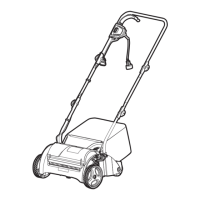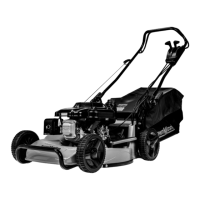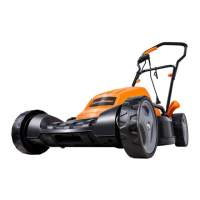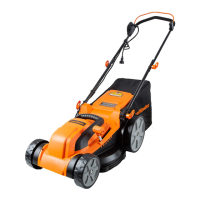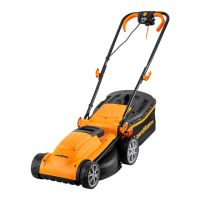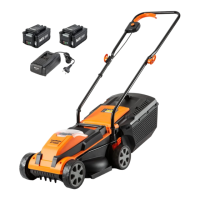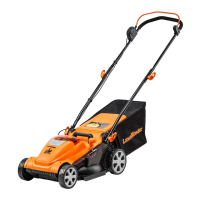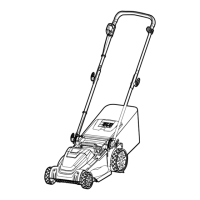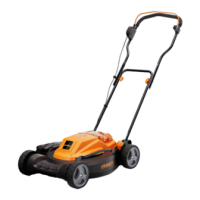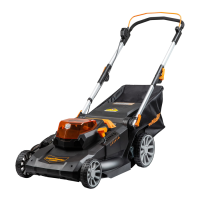5
IMPORTANT SAFETY INSTRUCTIONS
■ To reduce the risk of electric shock, this tool has a polarized plug (one blade is wider than the other)
and will require the use of a polarized extension cord. The tool plug will t into a polarized extension
cord only one way.
■ If the plug does not t fully into the extension cord, reverse the plug. If the plug still does not t,
obtain a correct polarized extension cord. A polarized extension cord will require the use of a
polarized wall outlet. This plug will t into the polarized wall outlet only one way. If the plug does not
t fully into the wall outlet, reverse the plug. If the plug still does not t, contact a qualied electrician
to install the proper wall outlet. Do not change the equipment plug, extension cord receptacle, or
extension cord plug in any way.
■ Make sure your extension cord set is in good condition. When using an extension cord, be sure to
use one heavy enough to carry the current your product will draw. For lengths less than 50 feet, a
No. 14 AWG extension cord should be used. An undersized cord will cause a drop in line voltage
resulting in loss of power and overheating.
■ Store idle scarier/dethatcher indoors. When not in use, the tool should be stored indoors, in a dry
and secure place that cannot be accessed by children.
■ Maintain the tool with care. Keep cutting edges sharp and clean for best and safest performance.
■ Inspect the scarier/dethatcher cord periodically and if damaged, have it repaired by an authorized
service facility. Inspect extension cords periodically and replace if damaged. Keep handles dry,
clean, and free from oil and grease.
■ Check damaged parts.Check all safety guards or other parts that could affect operation carefully
to ensure that the tool will operate properly and perform its intended function. Check for alignment
of moving parts, binding of moving parts, breakage of parts, mounting, and any other condition
that may affect its operation. A guard or other part that is damaged should be properly repaired or
replaced by a qualied person.
OPERATION
■ Only operate the equipment in daylight or good articial light.
■ Do not put hands or feet near under rotating parts or the scarier/dethatcher. Always keep clear of
the discharge opening.
■ Avoid holes, ruts, bumps, rocks, or other hidden hazards. Uneven terrain could overturn the tool, or
cause operator to lose their balance or footing.
■ Do not direct discharge material toward anyone. Avoid discharging material against a wall or
obstruction. Material may ricochet back toward the operator.
■ Always wear safety glasses with side shields. Everyday glasses have only impact-resistant lenses.
They are NOT safety glasses. Following this rule will reduce the risk of eye injury. Use a face mask
if operation is dusty.
■ Always be sure of your footing. A slip and fall can cause serious personal injury.
■ Do not operate the tool in reverse unless absolutely necessary. Always look down and behind
before and while backing.
■
Always be sure the cylinder has stopped after releasing the switch lever and unplug before removing
the collection bag, cleaning, servicing, transporting, or lifting the scarier/dethatcher.
■ Stay behind the handle when the motor is running.
■ Do not force the tool. It will do the job better and safer at the rate for which it was designed.
■ Stop the motor and disconnect the plug from power source whenever leaving the equipment, before
cleaning the scarier/dethatcher housing, and before making any repairs or inspections.
■ Do not operate the tool on excessively steep slopes.
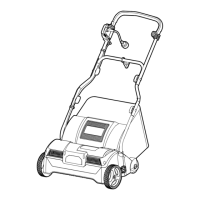
